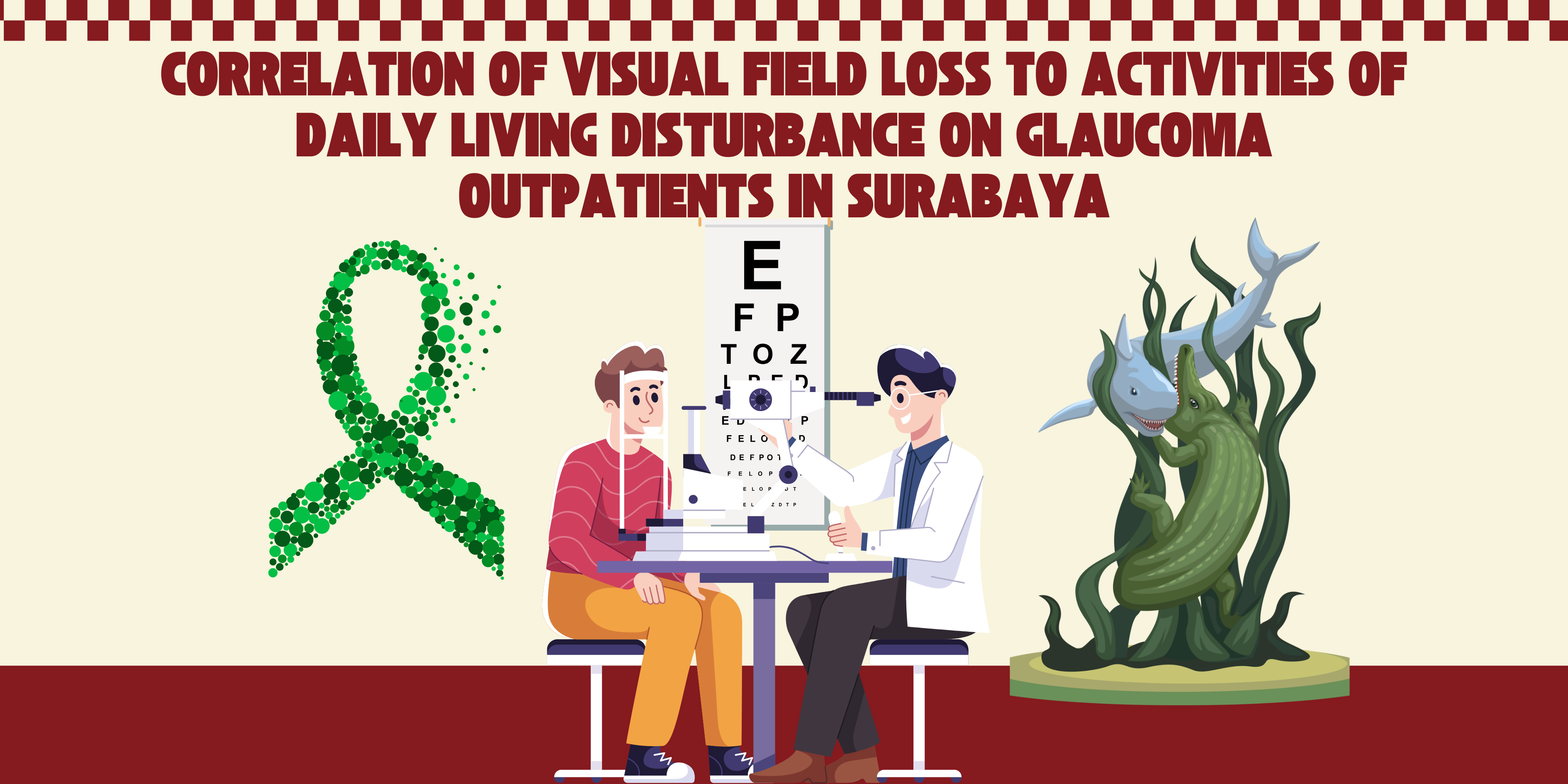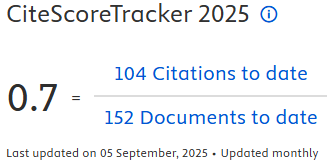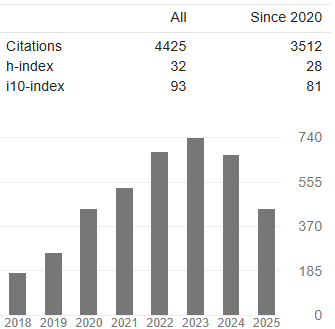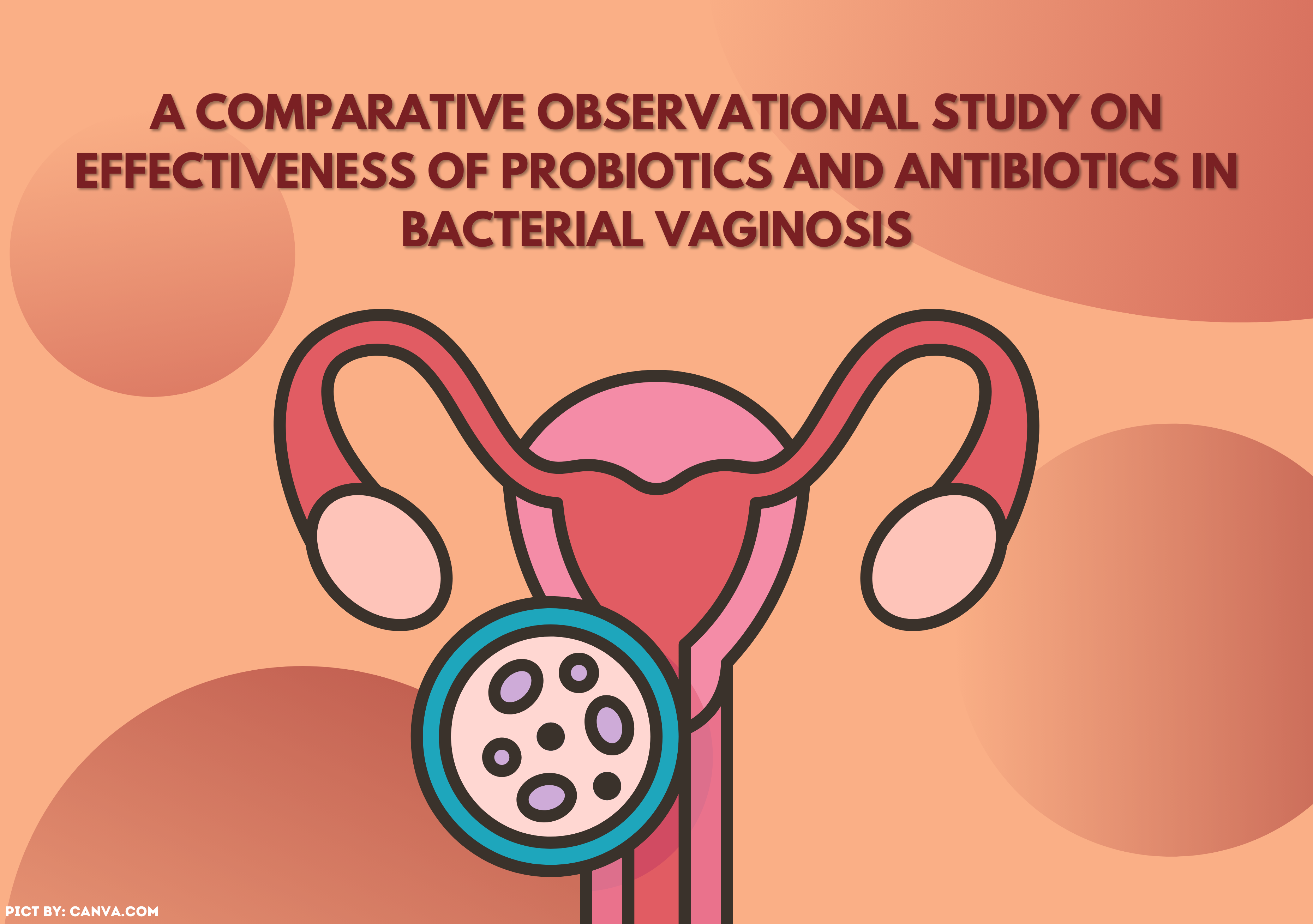CORRELATION OF VISUAL FIELD LOSS TO ACTIVITIES OF DAILY LIVING DISTURBANCE ON GLAUCOMA OUTPATIENTS IN SURABAYA

Downloads
Introduction: Glaucoma is known as a thief of sight due to its progressive visual field loss with symptoms typically manifesting only at advanced stages. Visual field loss, particularly peripheral vision, can affect patients’ quality of life (QoL) in performing activities of daily living. Glaucoma cases are predicted to rise by 74% worldwide between 2013 and 2040. Aims: Assess the correlation between the degree of visual field loss and disturbance in activities of daily living in glaucoma outpatients. Methods: A total of 60 patients from Dr. Soetomo General Academic Hospital were interviewed using the NEI VFQ-25 on near vision, distance vision, peripheral vision, social function, driving, and dependency subscales. Visual field loss was assessed using the Humphrey Visual Field Analyzer (HFA) and categorized based on the Hodapp, Parish, and Anderson (HPA) classification using the better-eye mean deviation value. Meanwhile, Spearman’s rank correlation was used to determine the correlation between the patients’ visual field loss and NEI VFQ-25 interview results. Results: Significant moderate correlations were observed between visual field loss and the social function (r = 0.545) and dependency (r = 0.483) subscales. Significant weak correlations were observed in the near vision (r = 0.351), distance vision (r = 0.383), and peripheral vision (r = 0.398) subscales. An insignificant weak correlation was observed in the driving subscale (r = 0.262). Conclusion: Visual field loss in glaucoma patients is associated with impaired performance in activities of daily living, with the severity of limitation increasing in line with the progression of visual field loss.
Azoulay-Sebban, L., Zhao, Z., Zenouda, A., Lombardi, M., Gutman, E., Brasnu, E., Hamard, P., Sahel, J.A., Baudouin, C. and Labbé, A., 2020. Correlations between subjective evaluation of quality of life, visual field loss, and performance in simulated activities of daily living in glaucoma patients. Journal of Glaucoma, [online] 29(10), pp.970–974. https://doi.org/10.1097/IJG.0000000000001597
Crabb, D.P., 2016. A view on glaucoma - Are we seeing it clearly? Eye (Basingstoke), 30(2), pp.304–313. https://doi.org/10.1038/eye.2015.244
Dhawan, M., Hans, T., Sandhu, P.S. and Midha, N., 2019. Evaluation of vision-related quality of life in patients with glaucoma: A hospital-based study. Journal of Current Glaucoma Practice, 13(1), pp.9–15. https://doi.org/10.5005/jp-journals-10078-1242
Fenwick, E.K., Ong, P.G., Man, R.E.K., Cheng, C.Y., Sabanayagam, C., Wong, T.Y. and Lamoureux, E.L., 2016. Association of vision impairment and major eye diseases with mobility and independence in a Chinese population. JAMA Ophthalmology, 134(10), pp.1087–1093. https://doi.org/10.1001/jamaophthalmol.2016.2394
Huang, W., Gao, K., Liu, Y., Liang, M. and Zhang, X., 2020. The Adverse Impact of Glaucoma on Psychological Function and Daily Physical Activity. Journal of ophthalmology, [online] 2020. https://doi.org/10.1155/2020/9606420
Jones, N., Bartlett, H.E. and Cooke, R., 2019. An analysis of the impact of visual impairment on activities of daily living and vision-related quality of life in a visually impaired adult population. British Journal of Visual Impairment, 37(1), pp.50–63. https://doi.org/10.1177/0264619618814071
Kaur, H. and Kochar, R., 2016. Glaucoma: The Silent Thief of Vision. ARC Journal of Nutrition and Growth, 2(1), pp.28–34. https://doi.org/10.20431/2455-2550.0201004
Kim, J.H., Rabiolo, A., Morales, E., Yu, F., Afifi, A.A., Nouri-Mahdavi, K. and Caprioli, J., 2019. Risk Factors for Fast Visual Field Progression in Glaucoma. American Journal of Ophthalmology, 207, pp.268–278. https://doi.org/10.1016/j.ajo.2019.06.019
Klauke, S., Sondocie, C. and Fine, I., 2023. The impact of low vision on social function: The potential importance of lost visual social cues. Journal of Optometry, https://doi.org/10.1016/j.optom.2022.03.003
Komaratih, E., Rindiastuti, Y. and Primitasari, Y., 2020. Profile of Secondary Glaucoma at a Tertiary Hospital in East Java. Folia Medica Indonesiana, 56(1), p.56. https://doi.org/10.20473/fmi.v56i1.18452
Kwon, M.Y., Liu, R., Patel, B.N. and Girkin, C., 2017. Slow Reading in Glaucoma: Is it due to the Shrinking Visual Span in Central Vision? Investigative Ophthalmology & Visual Science, [online] 58(13), p.5810. https://doi.org/10.1167/iovs.17-22560
Lange, R., Kumagai, A., Weiss, S., Zaffke, K.B., Day, S., Wicker, D., Howson, A., Jayasundera, K.T., Smolinski, L., Hedlich, C., Lee, P.P., Massof, R.W., Stelmack, J.A., Carlozzi, N.E. and Ehrlich, J.R., 2021. Vision-related quality of life in adults with severe peripheral vision loss: a qualitative interview study. Journal of Patient-Reported Outcomes, [online] 5(1), pp.1–12. https://doi.org/10.1186/s41687-020-00281-y
Lee, S.S.Y., Wood, J.M. and Black, A.A., 2020. Impact of glaucoma on executive function and visual search. Ophthalmic and Physiological Optics, [online] 40(3), pp.333–342. https://doi.org/10.1111/opo.12679
Machado, L.F., Kawamuro, M., Portela, R.C., Fares, N.T., Bergamo, V., de Souza, L.M., Paranhos, A., Prata, T.S. and Gracitelli, C.P.B., 2019. Factors associated with vision-related quality of life in Brazilian patients with glaucoma. Arquivos Brasileiros de Oftalmologia, 82(6), pp.463–470. https://doi.org/10.5935/0004-2749.20190089
McKean-Cowdin, R., Varma, R., Wu, J., Hays, R.D. and Azen, S.P., 2007. Severity of Visual Field Loss and Health-related Quality of Life. American Journal of Ophthalmology, 143(6), pp.1013–1023. https://doi.org/10.1016/j.ajo.2007.02.022
Miguel, A.I.M., Fonseca, C., Oliveira, N., Henriques, F. and Silva, J.F., 2015. Difficulties of daily tasks in advanced glaucoma patients - A videotaped evaluation. Revista Brasileira de Oftalmologia, 74(3), pp.164–170. https://doi.org/10.5935/0034-7280.20150034
Musch, D.C., Gillespie, B.W., Niziol, L.M., Lichter, P.R. and Varma, R., 2011. Intraocular pressure control and long-term visual field loss in the collaborative initial glaucoma treatment study. Ophthalmology, 118(9), pp.1766–1773. https://doi.org/10.1016/j.ophtha.2011.01.047
Nayyar, S., Kumar, S., Rehman, O., Ichhpujani, P. and Singla, E., 2022. Impact of moderate and severe primary open-angle glaucoma on quality of life due to activity limitation. Indian Journal of Ophthalmology, 70(2), pp.552–557. https://doi.org/10.4103/ijo.IJO_1687_21
Patterson, G., Howard, C., Hepworth, L. and Rowe, F., 2019. The Impact of Visual Field Loss on Driving Skills: A Systematic Narrative Review. The British and Irish Orthoptic Journal, [online] 15(1), p.53. https://doi.org/10.22599/bioj.129
Quaranta, L., Riva, I., Gerardi, C., Oddone, F., Floriano, I. and Konstas, A.G.P., 2016. Quality of Life in Glaucoma: A Review of the Literature. Advances in Therapy, [online] 33(6), p.959. https://doi.org/10.1007/s12325-016-0333-6
Ramulu, P., 2009. Glaucoma and disability: Which tasks are affected, and at what stage of disease? Current Opinion in Ophthalmology, 20(2), pp.92–98. https://doi.org/10.1097/ICU.0b013e32832401a9
Ramulu, P.Y., West, S.K., Munoz, B., Jampel, H.D. and Friedman, D.S., 2009. Driving Cessation and Driving Limitation in Glaucoma. The Salisbury Eye Evaluation Project. Ophthalmology, 116(10), pp.1846–1853. https://doi.org/10.1016/j.ophtha.2009.03.033
Richman, J., Lorenzana, L.L., Lankaranian, D., Dugar, J., Mayer, J., Wizov, S.S. and Spaeth, G.L., 2010. Importance of Visual Acuity and Contrast Sensitivity in Patients With Glaucoma. Archives of Ophthalmology, [online] 128(12), pp.1576–1582.
https://doi.org/10.1001/archophthalmol.2010.275
Schacknow, P.N. and Samples, J.R., 2010. The glaucoma book: A practical, evidence-based approach to patient care. The Glaucoma Book: A Practical, Evidence-Based Approach to Patient Care. Springer New York. https://doi.org/10.1007/978-0-387-76700-0
Shah, K., Frank, C.R. and Ehrlich, J.R., 2020. The association between vision impairment and social participation in community-dwelling adults: a systematic review. Eye, [online] 34(2), p.290. https://doi.org/10.1038/s41433-019-0712-8
Sharma, S. and Singh, H., 2016. Glaucoma: Risk Factors and Prevalence: A Review. International Journal Of Community Health And Medical Research, 2(2), pp.66–72. https://doi.org/10.21276/ijchmr.2016.2.2.12
Tham, Y.C., Li, X., Wong, T.Y., Quigley, H.A., Aung, T. and Cheng, C.Y., 2014. Global prevalence of glaucoma and projections of glaucoma burden through 2040: A systematic review and meta-analysis. Ophthalmology, [online] 121(11), pp.2081–2090. https://doi.org/10.1016/j.ophtha.2014.05.013.
Vajaranant, T.S., Nayak, S., Wilensky, J.T. and Joslin, C.E., 2010. Gender and glaucoma: what we know and what we need to know. Current opinion in ophthalmology, [online] 21(2), p.91. https://doi.org/10.1097/ICU.0b013e3283360b7e
Van Landingham, S.W., Hochberg, C., Massof, R.W., Chan, E., Friedman, D.S. and Ramulu, P.Y., 2013. Driving patterns in older adults with glaucoma. BMC Ophthalmology, [online] 13(1), p.4. https://doi.org/10.1186/1471-2415-13-4
Weinreb, R.N., Aung, T. and Medeiros, F.A., 2014. The Pathophysiology and Treatment of Glaucoma: A Review. JAMA, [online] 311(18), p.1901. https://doi.org/10.1001/jama.2014.3192
Wood, J.M. and Black, A.A., 2016. Ocular disease and driving. Clinical and Experimental Optometry, [online] 99(5), pp.395–401. https://doi.org/10.1111/cxo.12391
Wood, J.M., Black, A.A., Mallon, K., Thomas, R. and Owsley, C., 2016. Glaucoma and Driving: On-Road Driving Characteristics. PLoS ONE, [online] 11(7), p.158318. https://doi.org/10.1371/journal.pone.0158318
Worley, A. and Grimmer-Somers, K., 2011. Risk factors for glaucoma: What do they really mean? Australian Journal of Primary Health, 17(3), pp.233–239. https://doi.org/10.1071/PY10042
Yang, Y., Trope, G.E., Buys, Y.M., Badley, E.M., Gignac, M.A.M., Shen, C. and Jin, Y.P., 2016. Glaucoma Severity and Participation in Diverse Social Roles: Does Visual Field Loss Matter? In: Journal of Glaucoma. Lippincott Williams and Wilkins. pp.e697–e703. https://doi.org/10.1097/IJG.0000000000000353
Copyright (c) 2025 The Indonesian Journal of Public Health

This work is licensed under a Creative Commons Attribution-NonCommercial-ShareAlike 4.0 International License.
- The authors agree to transfer the transfer copyright of the article to The Indonesian Journal of Public Health effective if and when the paper is accepted for publication.
- Authors and other parties are bound to the Creative Commons Attribution-NonCommercial-ShareAlike 4.0 International License for the published articles, legal formal aspect of journal publication accessibility refers to Creative Commons Attribution-NonCommercial-ShareAlike 4.0 International License (CC BY-NC-SA), implies that:
- Attribution ” You must give appropriate credit, provide a link to the license, and indicate if changes were made. You may do so in any reasonable manner, but not in any way that suggests the licensor endorses you or your use.
- NonCommercial ” You may not use the material for commercial purposes.
- ShareAlike ” If you remix, transform, or build upon the material, you must distribute your contributions under the same license as the original.































